Worried About Summer Pests? Here’s How To Provide First Aid For Bites And Stings
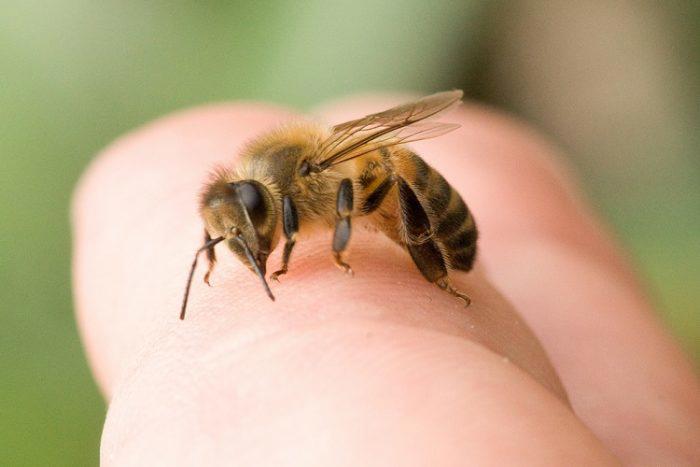
As summer approaches, many of us look forward to spending more time outdoors, whether it’s barbecuing with friends, hiking in nature, or enjoying a day at the beach. However, with warmer weather comes an increase in insect activity. Being prepared for insect bites, is essential for a safe and enjoyable summer.
An increase of encounters with pesky animals and insects such as snakes, spiders, ticks, bees and wasps are one of the few inconveniences of the season, but it doesn’t need to put a dampener on an otherwise sunny day if you know how to provide First Aid for bites and stings.
Understanding Common Summer Insects
The season brings a variety of different insects, each with its own potential risks. Mosquitoes are notorious for their itchy bites and can transmit diseases. Bees and wasps, while generally not aggressive, can sting when threatened, leading to painful or life-threatening reactions. Spiders, too, become more active during this season. Familiarising yourself with these insects can help you stay vigilant.
What Happens If You Suffer From A Bite Or Sting
Bites and stings generally only cause mild pain, discomfort, itching, swelling and redness around the affected area. However, depending on the area of a sting it could have fatal consequences if stung inside the mouth, on the tongue or throat.

Australia is home to a number of poisonous animals and insects. If bitten or stung by these creatures the outcome can potentially be deadly if the injured doesn’t receive the appropriate First Aid for bites and stings in the first initial moments.
Whether you suffer from a bite or sting from a deadly or relatively harmless critter always use the appropriate First Aid for bites and stings to prevent infection and aid the beginning of the healing process.
Here’s how you can protect yourself and your loved ones.
Preventative Measures
Preventing bites is the best first step. Here are some practical tips:
- Use Insect Repellent: Apply a repellent when heading outdoors, especially during peak hours (dawn and dusk).
- Dress Appropriately: Wear long sleeves and pants, when possible, particularly in heavily wooded areas.
- Avoid Standing Water: Mosquitoes breed in stagnant water, so eliminate any standing water around your home.
Creating a Safe Outdoor Space
Your yard can be a breeding ground for insects if not maintained properly. Here are ways to make your outdoor spaces safer:
- Remove Standing Water: Check gutters, birdbaths, and flowerpots regularly.
First Aid for Various Bites And Stings
Even with precautions, bites can happen. There are many different native animals and insects in Victoria that can inflict bites or stings which cause a variety of side effects. Although there may be different species of animals and insects the First Aid for bites and stings for each category remains the same.
Follow our tips on how to provide First Aid for bites and stings for Victoria’s most common offenders:
Spiders
There are more than 20 spiders that are commonly found in and around workplaces, homes and gardens throughout Victoria, but most will only cause mild irritation through manageable symptoms if bitten. However, the Australian Funnel-web Spider and Redback Spider bite affects the nervous system and can be severely dangerous if anti-venom is not provided. These are the only two spiders that have caused deaths in Australia in the past.
Highlighting Specific Risks
To minimise encounters:
- Inspect Your Home: Check for webs and nests in corners, especially in sheds and garages.
- Be Cautious When Reaching into Dark Spaces: Always look before you reach into piles of wood or under rocks.
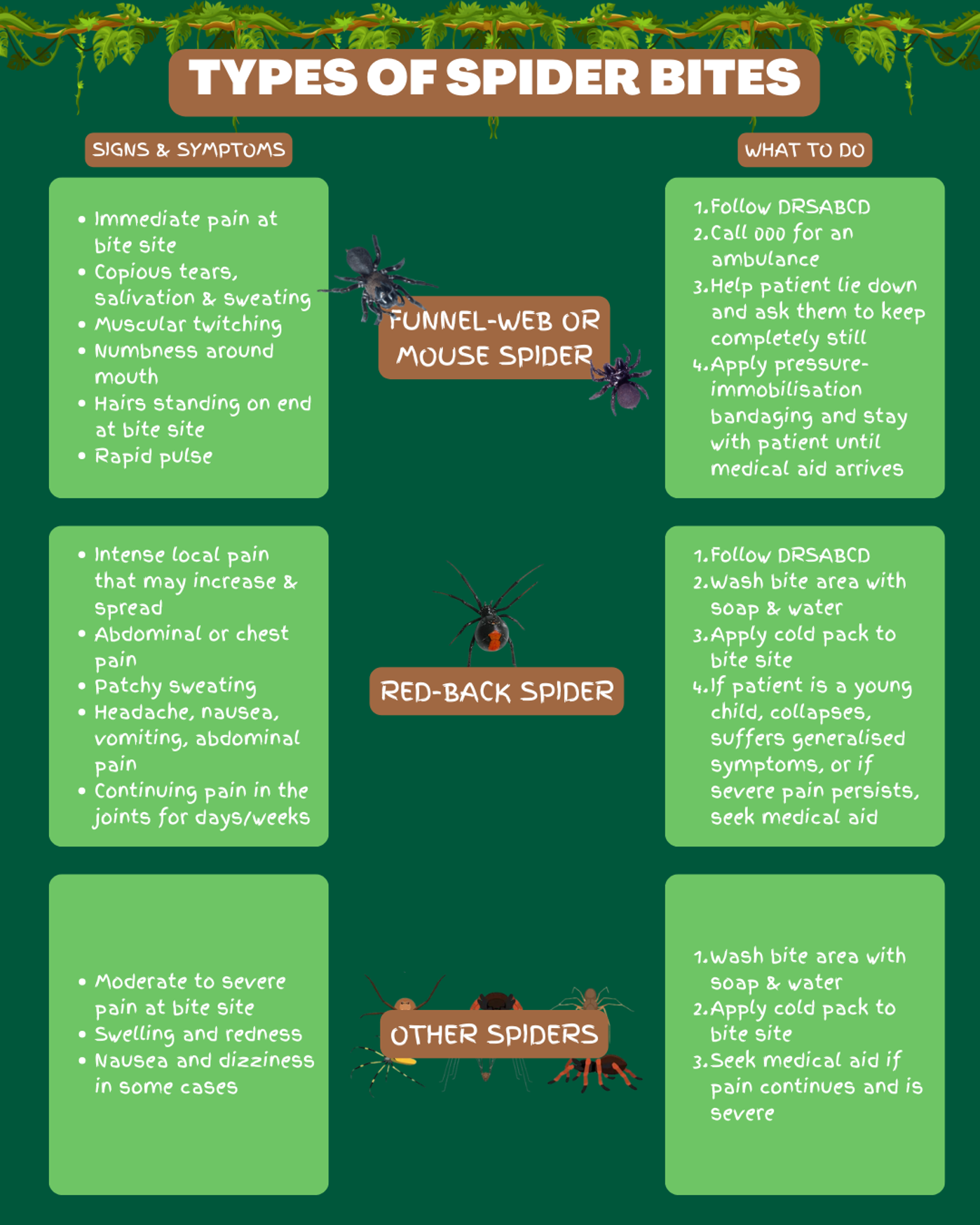
Ticks
Ticks are often known to attach themselves to our beloved house pets, but they do also pose a risk to people. The consequence of a tick attaching itself to a person is much less severe than for cats and dogs but should still always receive First Aid.
Signs and symptoms:
-
Pain at bite site
- Swelling and redness
- Muscle weakness
- Difficulty breathing & swallowing
- Persistent headache
- Fever
- Aching joints
What to do:
- Remove tick using fine-tipped forceps - try not to squeeze body of the tick and take care to ensure that no head parts are left on the skin
- Use a cold pack to relieve pain and swelling
- If unsuccessful in removing tick, seek medical aid
- If patient shows sign of weakness, difficulty in breathing/swallowing, or persistent headache/fever/aching joints, call 000
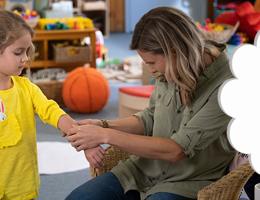
Bees, Wasps, and Leeches
Whether it’s a bumblebee, honey bee or wasp people are generally wary of the buzzing bugs in the summertime. Bee stings can be life-threatening or cause severe permanent complications from allergic reactions.
Signs and symptoms:
-
Moderate to severe pain at the bite or sting site
- Swelling and redness
- Other effects, such as shock, dizziness or nausea may also occur
It's worth noting that a leech bite produces the same signs and symptoms as bee or wasp stings, with the addition of severe bleeding.
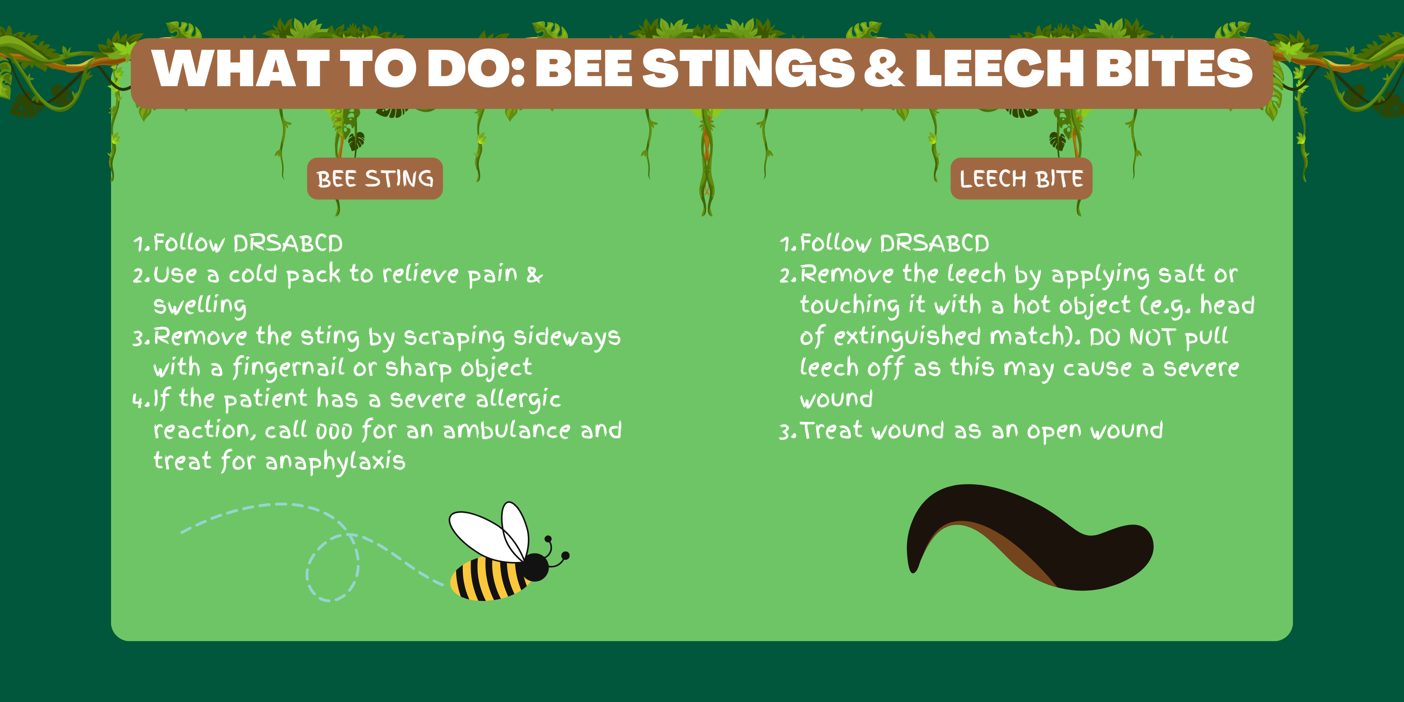
Snakes
Due to the varying climates in Australia, we see a large number of different snake species across the country. There around 140 land snakes and 20 sea snakes in Australia, and Victoria is home to many.
To find out a more in-depth outline of Australia’s deadly snakes and how to provide First Aid if you suffer a nasty encounter with the agile animal, read our Snake Bite First Aid Tips.

Here’s how to treat minor bites and stings:

Recognising Allergic Reactions
Be aware of the signs of allergic reactions, which can vary from mild to severe. Symptoms may include:
- Redness and swelling around the bite
- Difficulty breathing
- Swelling of the face or throat
For those with known allergies, carrying an EpiPen can be lifesaving. Always seek medical attention if you suspect a severe reaction.
Resources and Support
For more information on insect bites and treatment options, visit St John Ambulance website. In case of emergencies, always know the numbers for local poison control and emergency services and call 000.

Much like us, summer is the time certain animals and insects emerge from hibernation and explore the environment around them. Most of the time these animals and insects are harmless and uninterested in us, but you never know when your First Aid for bites and stings may become useful.
Summer is a time for adventure and the increased presence of pests certainly doesn’t mean you can’t still enjoy your time out in the sunshine. Knowledge of how to provide First Aid for bites and stings provides peace of mind to those confronted with a slithering snake, creepy-crawly or buzzing bug in the summertime.
Staying informed and prepared is key to enjoying the season safely. By taking proactive measures against insect bites, you can ensure that your summer adventures are filled with fun, not discomfort.
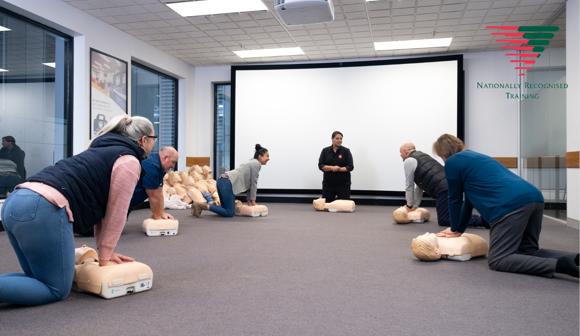
PROVIDE FIRST AID
Learn how to manage a range of common first aid scenarios.
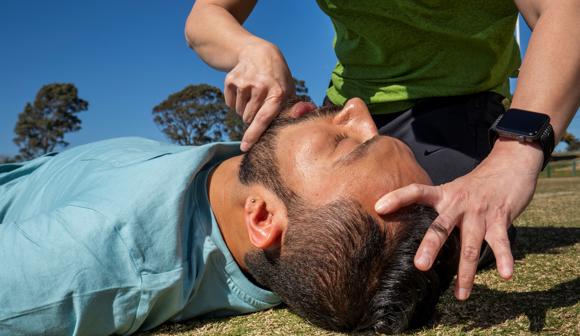
PROVIDE FIRST AID IN REMOTE SITUATIONS
Learn how to provide First Aid in remote areas where access to medical aid is difficult or delayed, including alpine, desert, marine, rural and tropical environments.
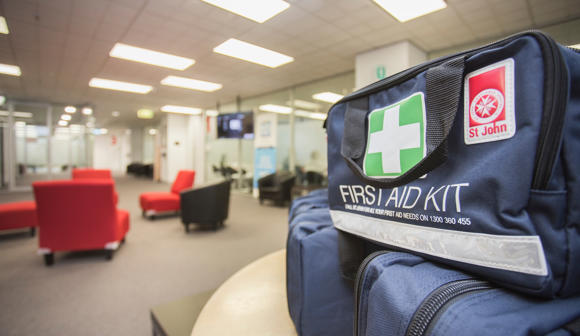
DO YOU HAVE THE RIGHT FIRST AID KIT FOR YOUR HOME, SCHOOL OR WORKPLACE?
St John has a range of First Aid products to suit any situation.
